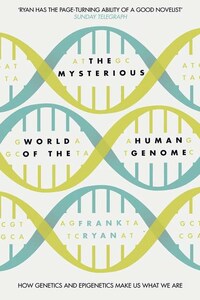William Collins
An imprint of HarperCollinsPublishers
1 London Bridge Street
London SE1 9GF
WilliamCollinsBooks.com
This eBook first published in Great Britain by William Collins in 2015.
Text © FPR-Books Ltd 2015
Diagrams by Mark Salwowski
Frank Ryan asserts his moral right to be identified as the author of this work.
A catalogue record for this book is available from the British Library.
Cover design by Jo Walker
Cover design © HarperCollinsPublishers 2015
All rights reserved under International and Pan-American Copyright Conventions. By payment of the required fees, you have been granted the non-exclusive, non-transferable right to access and read the text of this e-book on-screen. No part of this text may be reproduced, transmitted, down-loaded, decompiled, reverse engineered, or stored in or introduced into any information storage and retrieval system, in any form or by any means, whether electronic or mechanical, now known or hereinafter invented, without the express written permission of HarperCollins.
Source ISBN: 9780007549061
eBook Edition © June 2015 ISBN: 9780007549078
Version: 2016-03-02
Possibly I am a scientist because I was curious when I was young. I can remember being ten, eleven, twelve years old and asking, ‘Now why is that? Why do I see such a peculiar phenomenon? I would like to understand that.’
LINUS PAULING
No special act of creation, no spark of life was needed to turn dead matter into living things. The same atoms compose them both, arranged only in a different architecture.
JACOB BRONOWSKI,THE IDENTITY OF MAN
Bronowski begins his more famous book, The Ascent of Man, with the words, ‘Man is a singular creature. He has a set of gifts which make him unique among the animals: so that, unlike them, he is not a figure in the landscape – he is a shaper of the landscape.’ But why should we humans have become shapers of the landscape rather than mere figures inhabiting it? We differ from, say, a sea horse or a cheetah because our genetic inheritance, the sum of the DNA that codes for us, is different in humans when compared to the horse or the cheetah. We call this the genome, or, to be more specific in our case, the human genome.
Our genome defines us at the most profound level. That same genome is present in every one of the approximately 100,000 billion cells that make us who we are as individual members of the human species. But it runs deeper than that. In more personal terms, in myriad tiny variations that we each possess and are individual to us only, it is the very essence of us, all that, in genetic and hereditary terms, we have to contribute to our offspring, and through them to the sum total evolutionary inheritance of our species. To understand it is to know, in the most intimate sense, what it means to be human. No two people in the world today have exactly the same genome. Even identical twins, who will have been conceived with exactly the same genome, will have developed tiny differences between their genomes by the time of their births: differences that may have arisen in parts of their genomes that don’t actually code for what we normally mean by genes.
How strange to realise that there is actually more to our individual genome than genes alone. But let us put aside such details for the moment to focus on the more general theme. How could a relatively simple chemical code give rise to the complexity of a human being? How could our human genome have evolved? How does it actually work? Immediately we are confronted by mysteries.
To answer these questions we need to explore the genome’s basic structure, its operating systems and its mechanisms of expression and control. Some readers might react with incredulity. Surely any such exploration promises a journey into extraordinary complexity, one that is far too obscure and scientific for a non-scientist reader? In fact this book is aimed at exactly such a reader. As we shall see, the basic facts are easy enough to grasp, and the way to grasp them is to break the exploration into a series of simple, and eminently logical, stages. This journey will lead us through a sequence of remarkable revelations about our human history – even into the very distant past of our ancestors’ lives and their prehistoric exploration of our beautiful life-giving planet.










